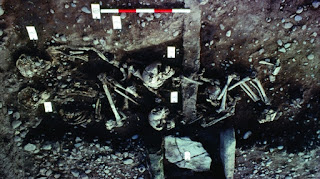Archeologists find Viking sword in southern Turkey
Searching through the ancient city of Patara in Turkey's Mediterranean resort city of Antalya, Turkish archeologists uncovered a sword dating back to over a millennium.
Lead excavator Professor Havva Iskan Işık of Akdeniz University told Anadolu Agency that they identified a Viking sword from the ninth or 10th century.
Işık said they have been carrying out excavation works for 30 years and have discovered important archaeological evidence so far.
"Finding a Viking sword in a harbor city in the Mediterranean area is of great importance," she said.
She said the sword offers a clue to how the Vikings served the Eastern Roman Empire, adding that the preserved total length of the sword is 43.2 centimeters (around 17 inches).
The sword was inside a wooden sheath, Isik said, and could have been left in the grave of a Viking soldier.
According to research, Viking swords in wooden sheaths were left in tombs as a "gift to dead", she said.





